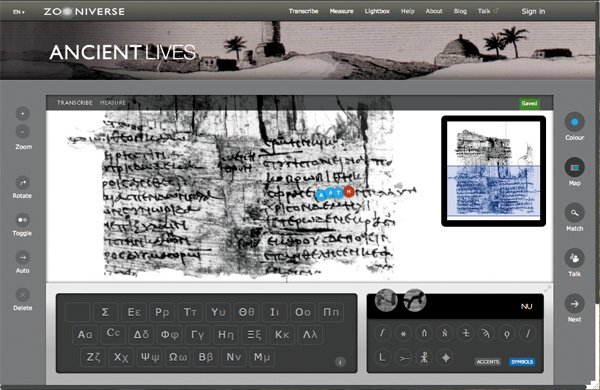
This isn’t the way things are done. Usually great manuscript finds are studied and published by experts before they are put online, often as part of a grand digitization project like the one described in this issue (“World’s Great Libraries Go Digital”). But, faced with the enormity of their task, the scholars charged with studying the 500,000 papyrus fragments known as the Oxyrhynchus Papyri are now enlisting the public’s help with transcribing and identifying the ancient texts—no experience required.
The papyri were discovered at the close of the 19th century by two British archaeologists—Grenfell and Hunt—who had embarked on their first official excavation at an Egyptian city 100 miles south of Cairo and 10 miles west of the Nile, known in antiquity as Oxyrhynchus.a While digging through the ancient dumps at the site, Grenfell and Hunt hit archaeological gold—countless pieces of discarded papyrus from the Roman-period city. Preliminary study revealed religious and literary texts both known and unknown—from Gnostic gospels to Greek plays. By far the majority of the fragments, however—about 90 percent—are what scholars call documentary papyri: lists, bills, notes, letters, wills and orders that documented the everyday life of the people of Oxyrhynchus. These are sometimes even more valuable to scholars than the literary papyri because they offer unprecedented insight into ordinary life in an ancient Roman colony.
Already a library member? Log in here.
Institution user? Log in with your IP address.

